- Home
- Equestrian Blogs, Horse Owner Guides & News | Harry Hall
- View All Blogs
- Rider Wellbeing
- Dealing with horse riding medical emergencies
Dealing with horse riding medical emergencies
Dealing with horse riding medical emergencies
In this article, Cory Jones from First Aid Training Co-operative continues the series of horse rider first aid treatments. This month, we will focus on what are often described as medical emergencies - heart attack, diabetes, seizures and anaphylaxis. We often think that “this won’t happen to me” or “I don’t need to know that” but having first aid knowledge can help save lives, and as equestrians, we often find ourselves in remote locations where it can take a while for help to reach us. Knowing what to do and when will help you deal with a medical emergency calmly, safely and proactively.
4-minute read
What is a heart attack?
A heart attack is a serious medical emergency in which the supply of blood to the heart is suddenly blocked, usually by a blood clot in one of the vessels in the heart. It often comes on suddenly and with no warning. Considerable pain is caused by the blood pressure trying to force blood through the blocked, or partially blocked blood vessels.
Symptoms of a heart attack
- Tight pain in the chest or chest feeling heavy
- Pain moving down the jaw, neck, back and shoulders and to one or both arms
- Shortness of breath
- Feeling weak or extreme fatigue
- Feeling lightheaded, dizzy or fainting
- Overwhelming feeling of anxiety or ‘sense of impending doom’
- Nausea and vomiting
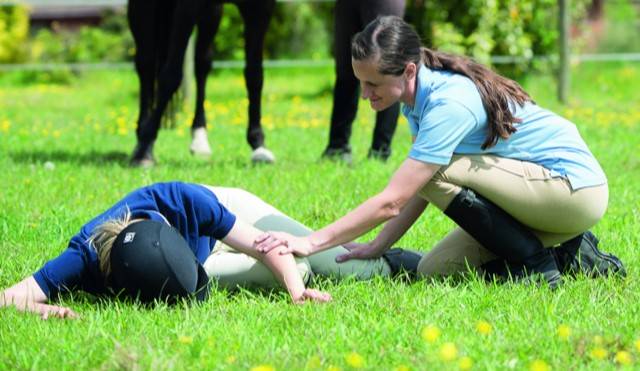
What should you do if someone is having a heart attack?
- Sit the casualty down on the floor leaning back against the wall and raise their knees.
- Phone 999/112 immediately
- If they are not allergic to aspirin and consent to take it, get them to chew it slowly in their mouth then swallow it. Give them one adult-sized aspirin which is a 300mg tablet or capsule.
- Give them lots of reassurance while you’re waiting for the ambulance to arrive.
- As a precaution and because some heart attacks can lead to cardiac arrest, get someone to get a defibrillator (also called an AED) if there’s one nearby. Don’t cause unnecessary stress in the casualty by alerting them to this! The defibrillator will only be needed if they stop breathing. Keep it nearby but out of their sight.
Why do heart attack symptoms vary in people?
Symptoms of a heart attack may vary with sex, age, fitness and medical history of the casualty. People who have had previous heart attacks may have different symptoms each time. There has been some recent research alerting us to differences in the symptoms felt by women and men who have had a heart attack. This research is ongoing. The symptoms outlined above are varied and include the symptoms recorded by both sexes.
What is asthma?
In the UK about 8% of the population or one in every 12 adults is diagnosed with asthma and 1,500 people die every year in the UK as a result of asthma. Asthma is a condition in which your airways narrow due to swelling and produce extra mucus, causing coughing, wheezing and shortness of breath. Most people have specific triggers (exercise, cold, stress or anxiety, or airborne substances, such as pollen or pet hairs) that set off their asthma. Asthmatics should always carry a blue ‘reliever’ inhaler with them. It should be kept nearby ready to use and should be in date.
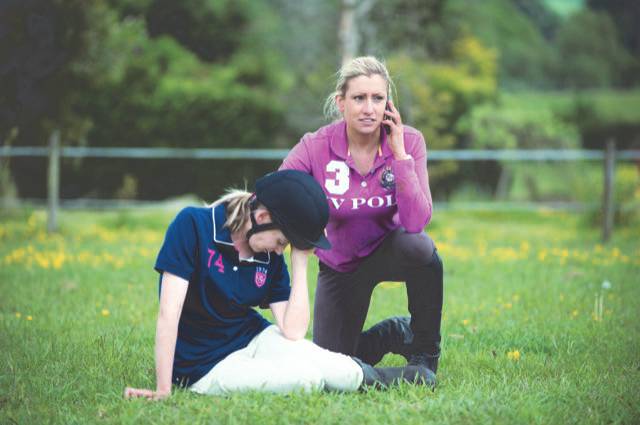
What should you do if someone is having an asthma attack:
- Sit upright
- Get away from the trigger (if pet hair or pollen for example)
- Stay calm
- Use their inhaler
- Take long, deep breaths. This helps to slow down their breathing and prevent hyperventilation (Hyperventilation makes the condition worsen quickly)
- Seek emergency medical help if their inhalers do not help
For an explanation of how to use an inhaler in more detail, you can refer to our video on the subject.
Diabetes and low blood sugar levels
Diabetes can cause sufferers to have either high or low blood sugar levels. The table below shows the common signs of sugar highs and lows and talks about how to manage these casualties.
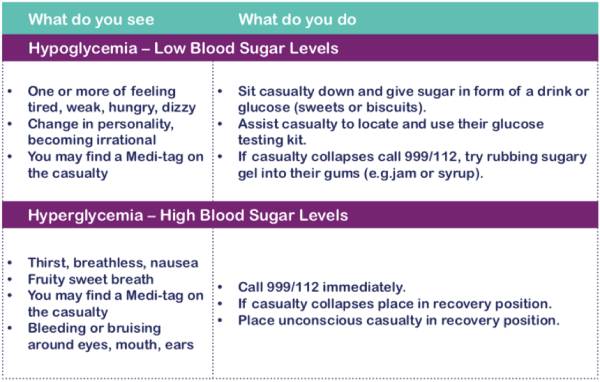
Is low blood sugar level common?
Often, riders don’t eat properly if they go to a show, or on a sponsored ride. We’ve all been there, you miss a meal or two – because of nerves or not having access to food. Combine this with doing vigorous exercise which burns off energy, this can lead to low blood sugar levels. One of the first signs of low blood sugar level is the casualty getting aggressive or grumpy, we sometimes use the expression 'hangry'. On a hot day low blood sugar levels could lead to the rider feeling disoriented, which is particularly dangerous if they are planning to drive the lorry home. Restore blood sugar levels with a sugary drink, a biscuit (or four) or dextrose tablets. But this is a short-term fix and you must have a proper, balanced meal as soon as possible and remember to ask them to drink plenty of fluids.
For more information read our extended blog, Diabetes – what a first aider should know.
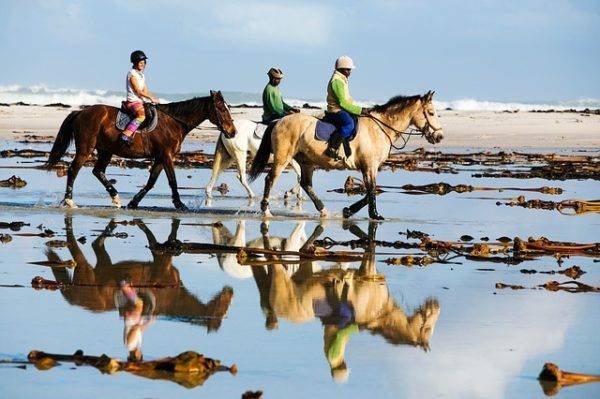
Most seizures happen suddenly without warning, last a short time (a few seconds or minutes) and stop by themselves. Seizures can be different for each person. They can be caused by a wide variety of causes including epilepsy. Some common causes could be head injury, stress, electric shock, drugs or severe fever.
When riding, a horse can sometimes sense someone is about to have a seizure and stop. If someone has a seizure let the seizure run its course, move objects away from the casualty if they may injury them, do not restrain the casualty. Check the time to see how long the seizure goes on for. If the seizure lasts more than 5 minutes, call an ambulance.
Try to stop other people crowding around. Most people’s seizures will stop on their own and the person will not need any medical help. However, if you are not sure whether someone is recovering from a seizure, they have hurt themselves during the seizure, or you have any concerns about them, you should call an ambulance.
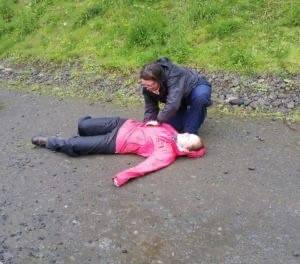
Although it can be frightening to see, this is not usually a medical emergency. Usually, once the convulsions have stopped, the person recovers, and their breathing goes back to normal. Stay with them until they recover and can safely return to what they had been doing before. Call for an ambulance if this is the first time the person has had a seizure.
About Cory Jones and the First Aid Training Co-operative:
Cory Jones is a Director of Medi-K and First Aid Training Co-operative. They work together to run highly respected equestrian specific first aid courses. Cory has been running first aid courses for outdoor workers for over 20 years.
Along with the training team at Medi-K, Cory has developed an equestrian first aid manual which can be downloaded to your phone or tablet.

All One Club members receive 10% off first aid courses with Medi-K, but that's only one of the many benefits our members are privy to.

